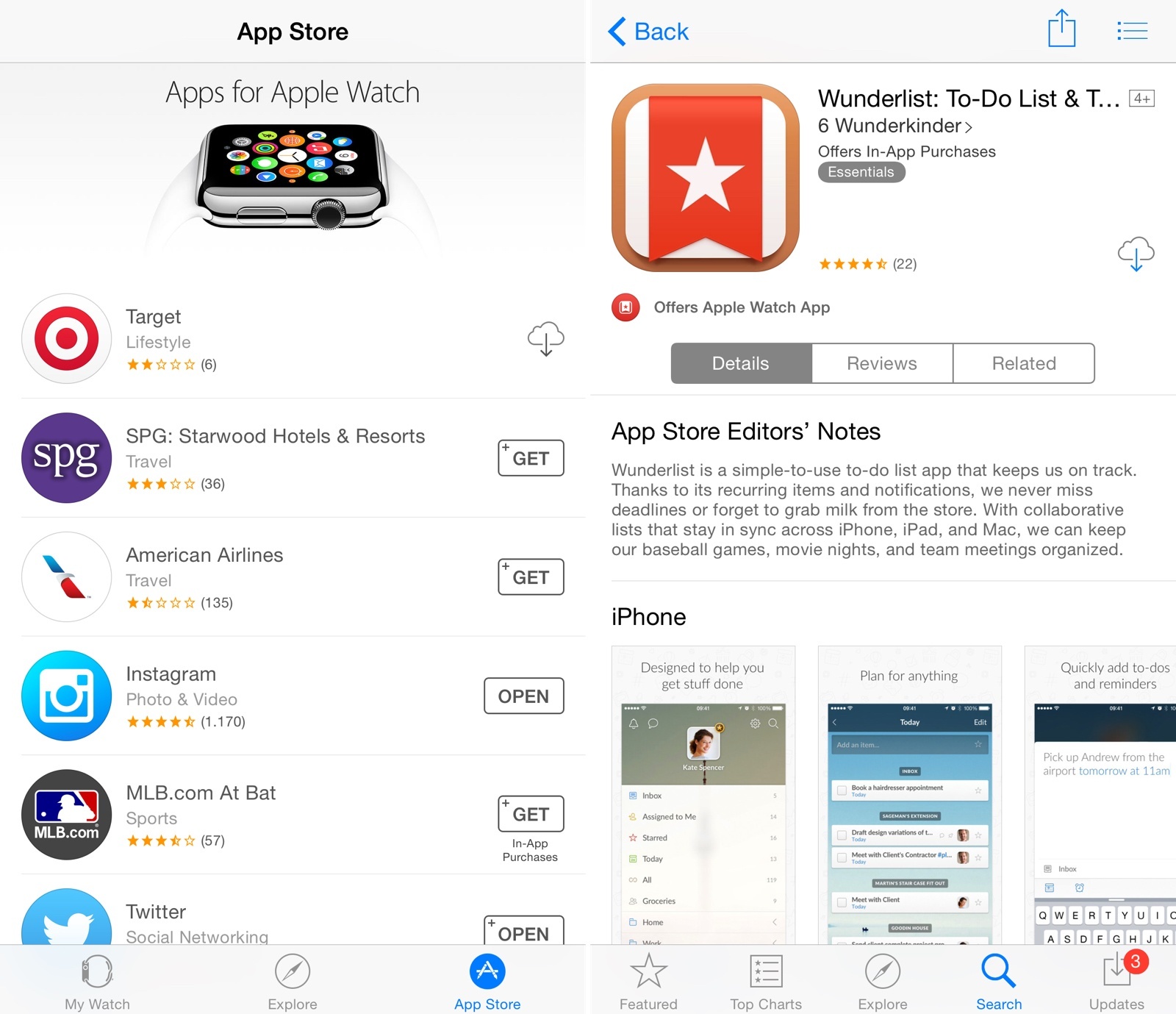Apple has begun opening the doors to the Apple Watch App Store, featuring iPhone apps that have been updated with Watch compatibility. According to BuzzFeed, more than 3000 Watch apps have been approved by Apple, and all of them will be available in the App Store section of the Apple Watch app for iPhone today.
In a screenshot shared by Buzzfeed, it appears that the App Store for Apple Watch will feature curated sections for categories such as Healthy Living, Games, and more. However, at the moment the Apple Watch app is only displaying a list of recommended apps by Apple, which include Twitter, Things, Wunderlist, Uber, Evernote, and Instagram. Apple is also promoting two games – Rules and Trivia Crack, both updated with Apple Watch support. A full refresh of the App Store for Apple Watch with more sections and lists is expected to go live later today.
In the meantime, Apple has also updated the App Store for iPhone with new badges to indicate whether an app offers Apple Watch compatibility. In search results and app descriptions, you’ll now see a badge with the app’s Apple Watch icon, as well as screenshots of the Apple Watch version underneath regular iPhone screenshots.
The new badge is also available on the App Store for iPad, with a label that says “Offers Apple Watch App for iPhone”. Currently, screenshots of Apple Watch apps are not available on the iPad App Store.



